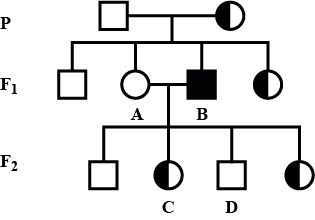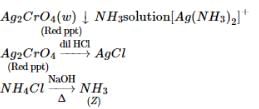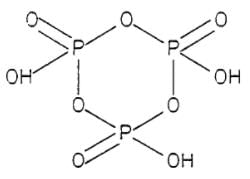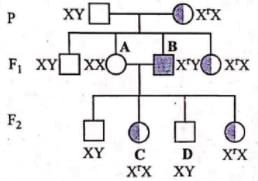NEET Unit Test - 5 - NEET MCQ
30 Questions MCQ Test - NEET Unit Test - 5
A cube-shaped permanent magnet is made of a ferromagnetic material with a magnetization 500M of about The side length is 20 cm. Magnetic dipole moment of the magnet is.
In electromagnetic waves the ratio of amplitudes of electric field and magnetic field is equal to
In a series LCR what will be phase difference between voltage drop across inductor and capacitor
In which of the following coordination entities, the magnitude Δo (CFSE in octahedral field) will be maximum ?
The pair of compounds having the same hybridisation for the central atom is
The CFSE for octahedral [CoCI6]4- is 18000 cm-1. Then the CFSE for tetrahedral [CoCI4]2- will be
(T) imparts violet colour (V) Red gas
(W) Red ppt.
(W) Red ppt. white ppt.
(U) gas (gives white fumes with HCl)
sublimes on heating Identify (T) to (Z).
[Ti (H2O)6]3+ absorbs green and yellow region part of visible light. Then the transmitted colour of the compound is
How many P - O - P bonds appear in cyclic metaphosphoric acid?
Iron becomes passive by..................due to formation of ................
In transcription in eukaryotes, heterogenous nuclear RNA (hn RNA) is transcribed by
Spermatogenesis and sperm differentiation are under the control of
What happen to haploid megaspores formed by megaspore mother cell in an angiospermic plant?
i. Benign tumors grow uncontrollably and spread to other organs.
ii. Malignant tumors have the ability to invade surrounding tissues and spread to distant parts of the body (metastasis).
iii. Benign tumors do not cause significant damage and remain localized.
iv. Malignant tumors are typically slow-growing and confined to their original location.
Match each ART (Assisted Reproductive Technology) technique with its correct description:
Column I Column II
(a) GIFT 1. Transfer of embryos with more than 8 blastomeres into the uterus
(b) IVF 2. Injection of sperm directly into the ovum
(c) ICSI 3. Placement of gametes into the fallopian tube for natural fertilization
(d) IUI 4. Introduction of sperm into the uterus or vagina
During gametogenesis, how many sperms and ova will be produced from 25 primary spermatocytes and 25 primary oocytes, respectively?
The fully processed hnRNA is called (i) and is transported out of the (ii) into (iii) for translation.
Study the given pedigree chart showing the inheritance of an X-linked trait controlled by gene 'r'

What will be the genotypes of individuals A, B, C and D respectively?
Which of the following events is correctly matched with the time period in a normal menstrual cycle?
Which one of the following acts as a physiological barrier to the entry of microorganisms in human body?
Abundant occurrence of fossilized pollen grain is due to resistant:
Select the correct option describing gonadotropin activity in a normal pregnant female.
Which of the following statements regarding the disease typhoid is/are correct?
(i) Salmonella typhi are the pathogenic bacteria which enter human intestine through contaminated food and water and migrate to other organs through blood.
(ii) Sustained high fever (39∘C to 40∘C), weakness, stomach pain, constipation, headache and loss of appetite are some common symptoms of typhoid.
(iii) Typhoid vaccine is available as DPT vaccine.
(iv) Widal test is used for diagnosis of typhoid fever.
(v) The patient of this disease is not required to be treated with antibiotics.

















